10 ways to stop draughts from doors - Expert tips for keeping cold gusts of air out
Our top tips for draught proofing a door and eliminating cold from your home
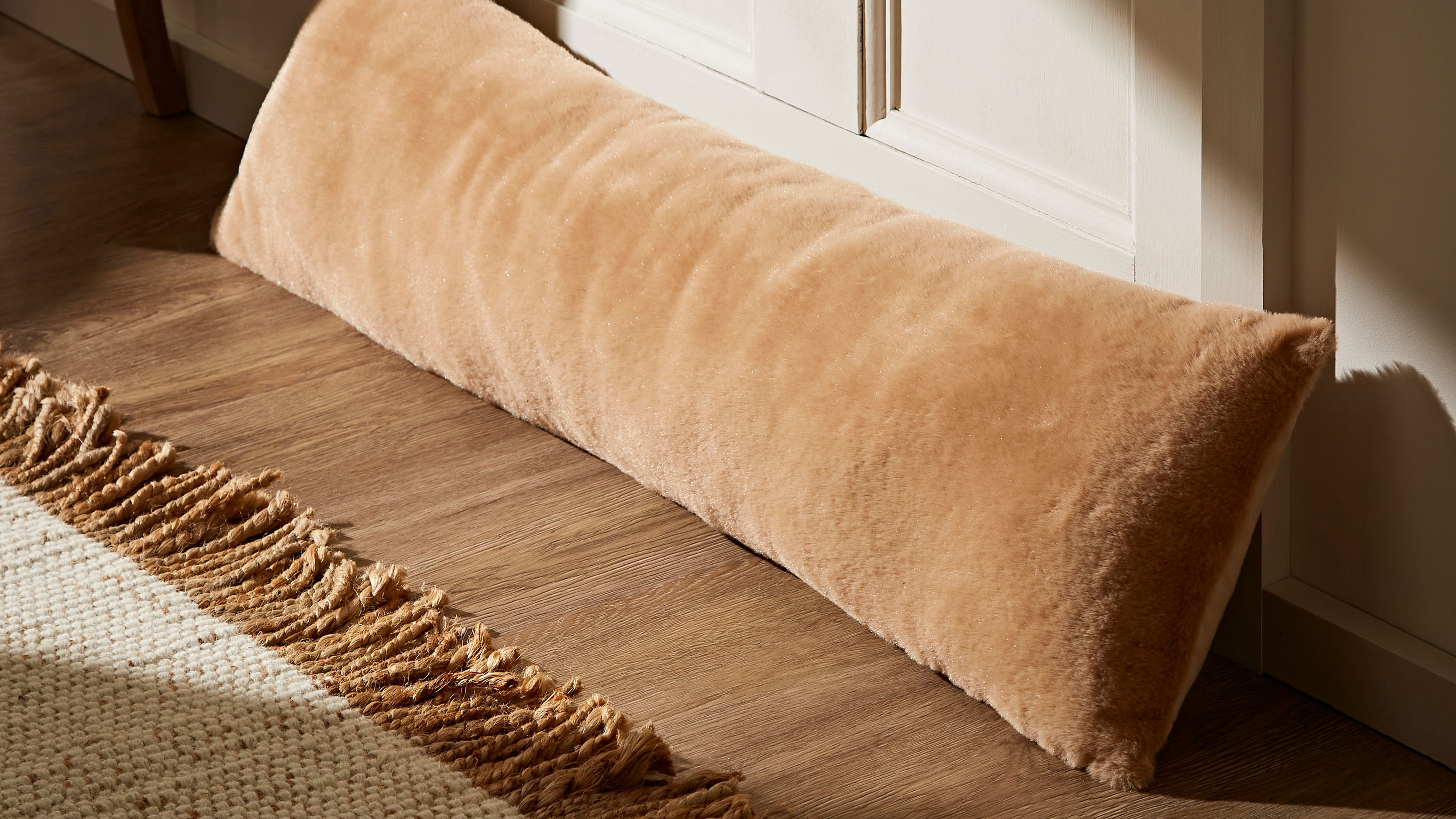

We’ve all experienced that shivery feeling from a rush of cold air through unwelcome gaps in a home’s building envelope. There are various ways to stop draughts from doors, the prime suspect for gusts of cold air in the home. Most of these can be done by a competent DIYer without involving a specialist trade.
The first step to draught-proofing is understanding where it’s coming from. Are there any obvious gaps around your front door? What about the letterbox and keyholes – is there a barrier there to stop air from coming through? Have you got glazed doors through to your garden that seems to let in the cold? Remember that glass is not as thermally efficient as solid materials. So is there single glazing on your front door that’s contributing to cold spots and draughts?
According to the Energy Saving Trust, draught-proofing around windows and doors could save the average household around £45 a year on lost energy. There’s never been a better time to make sure you’re maximising every penny and saving on utility bills. ‘Draught proofing a door is one of the cheapest and most effective ways to save energy and money in a home,’ says Victoria Brocklesby, COO at door specialist Origin.
10 ways for draught-proofing a door
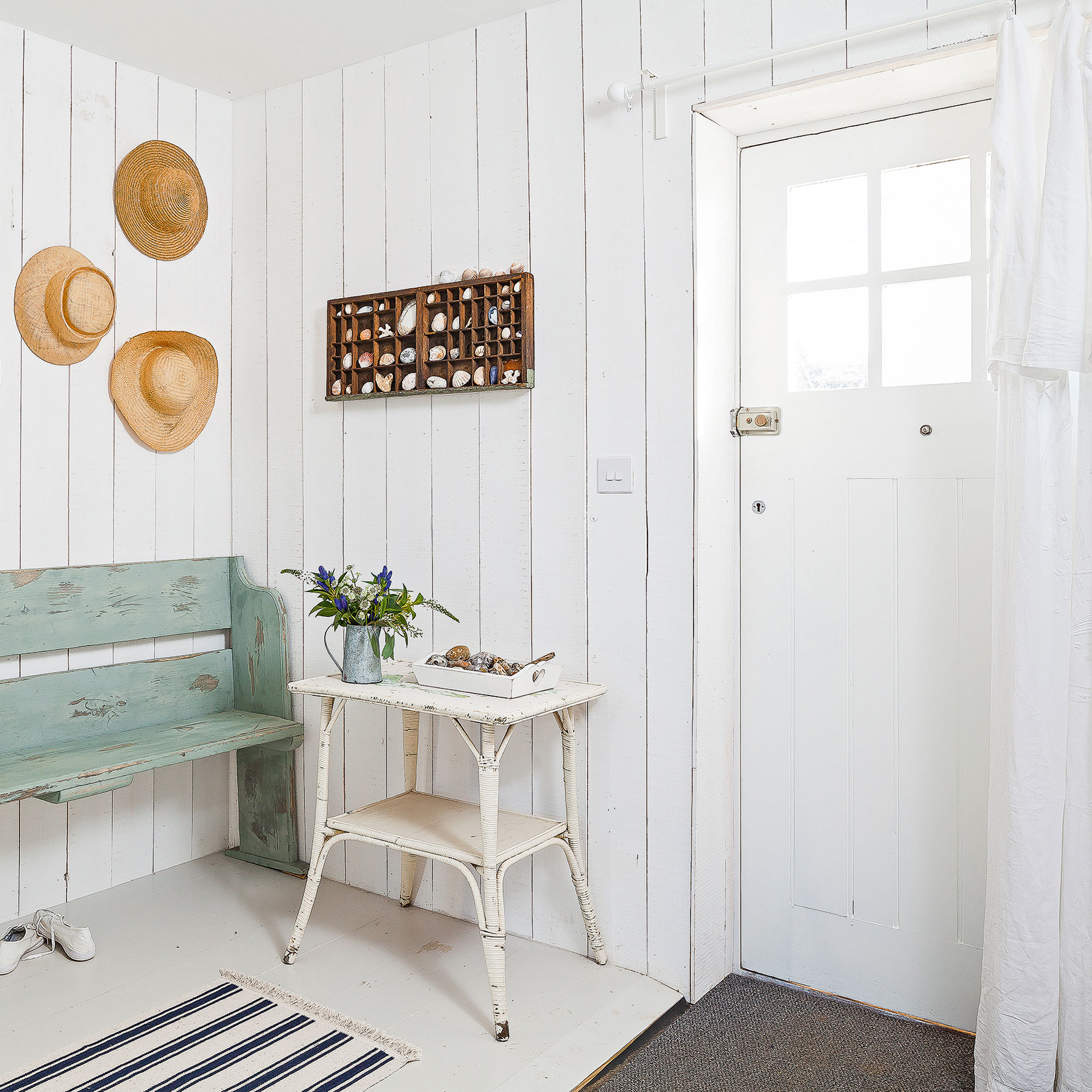
1. Fit a door brush strip draught excluder to stop draughts from doors
The space at the bottom of a door, where it runs over the carpet or other hallway flooring ideas, is the main culprit for draughts. ‘If there is a gap under the door then you can fit a brush seal or hinged flap at the bottom of the door,’ says Jill McLintock, Head of Product Marketing at Everest.
Brush strips are readily available online at stores such as Amazon and from DIY stores for under £10 to stop draughts from doors. You’ll need to measure the width of the door to make sure you’re getting the right minimum size. Before fitting, cut the strip to the exact length of the door to ensure there are no gaps. Position the brush so that it lightly sweeps the floor when the door is opened. If it’s too low then the door won’t open easily. If you leave a gap then you’ll still get draughts. Some products come with an adhesive backing, but you’ll probably still need to screw or nail it into place to ensure it won’t detach over time.
2. Install a hinged flap to the bottom of the door
Another for how to keep your house warm in winter and summer is to install a hinged flap design (sometimes called a weather bar) and eliminate draughts and at the bottom of your door. This works in a similar way to a brush strip. Instead of bristles, the product has a solid panel (usually made from rubber) that hinges and moves as the door opens and closes.
Bear in mind that the way your door opens makes a difference to what method is best. For instance, hinged flap designs are only suitable for doors that open inwards as they won’t be able to travel over the door frame.
Sign up to our newsletter for style inspiration, real homes, project and garden advice and shopping know-how
‘These products can be bought and fitted yourself, but to do it properly you should either be good at DIY or employ a carpenter who can make sure there are no gaps and the draught is completely excluded,’ says Elizabeth Assaf, Designer and Co-Founder at Urban Front.
3. Add draught strips around the edge of the door
The bottom of the door isn’t the only area where draughts can come in. The edges and top should also be properly sealed to stop heat from leaking out and cold air from entering your home. To stop draughts from doors, fit rubber, foam, brush or wiper strips. These are attached to the frame with adhesive and possibly screws or nails, depending on the product.
‘Look at filling any gaps that are around the edge of the door with self-adhesive edging strips. Remember to clean the surface first to ensure the edging sticks properly,’ says Jill McLintock.
Draught seals are available in different colours to match your door material. Make sure to measure your door length and width, as well as the depth of the gap that needs sealing, to get the right type, amount and size of excluder. Most products are supplied with fixings, but always double-check.
Some types of weatherstrip edging also double up as an acoustic seal (they’ll be clearly labelled on the supplier’s website). This could be a great option if your house is on a noisy street and you want to turn the volume down on annoying external sounds as well as cut draughts.
4. Invest in an efficient letterbox flap

Is your letterbox letting in unwanted draughts? An energy-efficient letterbox will have brushes and a flap that work together to stop air from blowing through into your home – and heat from escaping out. It's an easy way to save money at home. Many letterboxes are missing one of these elements, but they’re affordable and simple to fit yourself.
If you’re going to upgrade your letterbox then you’re probably going to replace the whole internal faceplate. Letterboxes come in different finishes and colours, including aluminium and plastic. Remember that some materials have better thermal efficiency credentials than others (so a simple metal flap without the brushes will always feel cold). Always take measurements of your door so that it fits properly; in some cases you may need to trim the letterbox hole.
Of course, the most efficient letterbox is one that doesn’t put a hole in the door at all. If you have a timber door, you could consider filling the gap (fit an appropriately-sized piece of wood, plane or sand down to fit, treat any blemishes with wood filler and paint or stain over). You could then invest in an external wall-mounted letterbox (available from as little as £29 at Amazon).
5. Buy a soft pillow draught excluder to stop draughts from doors
A more traditional method for blocking out draughts is to lay a long soft cushion or bolster on the floor, directly in front of the door. There are lovely designs available in a range of patterns – so this method can add cosy charm to your interior decor.
You can get designs that have buttons or fixings to attach to the door. Most soft cushion excluders are simply placed up against the door once it’s shut. In this case, the draught excluder won’t be in place when you’re out of the house, so the gap at the bottom of your front door is still a weak spot in your home’s thermal envelope, allowing heat to leak out and cold air to come in. For this reason, a soft pillow draught excluder is probably a better method for internal doors rather than your front door.
Another traditional option is to explore curtain ideas to hang on the inside of your front door – although this can be a bit fiddly to pull across when you’re leaving or coming home.
6. Make your own draught excluder
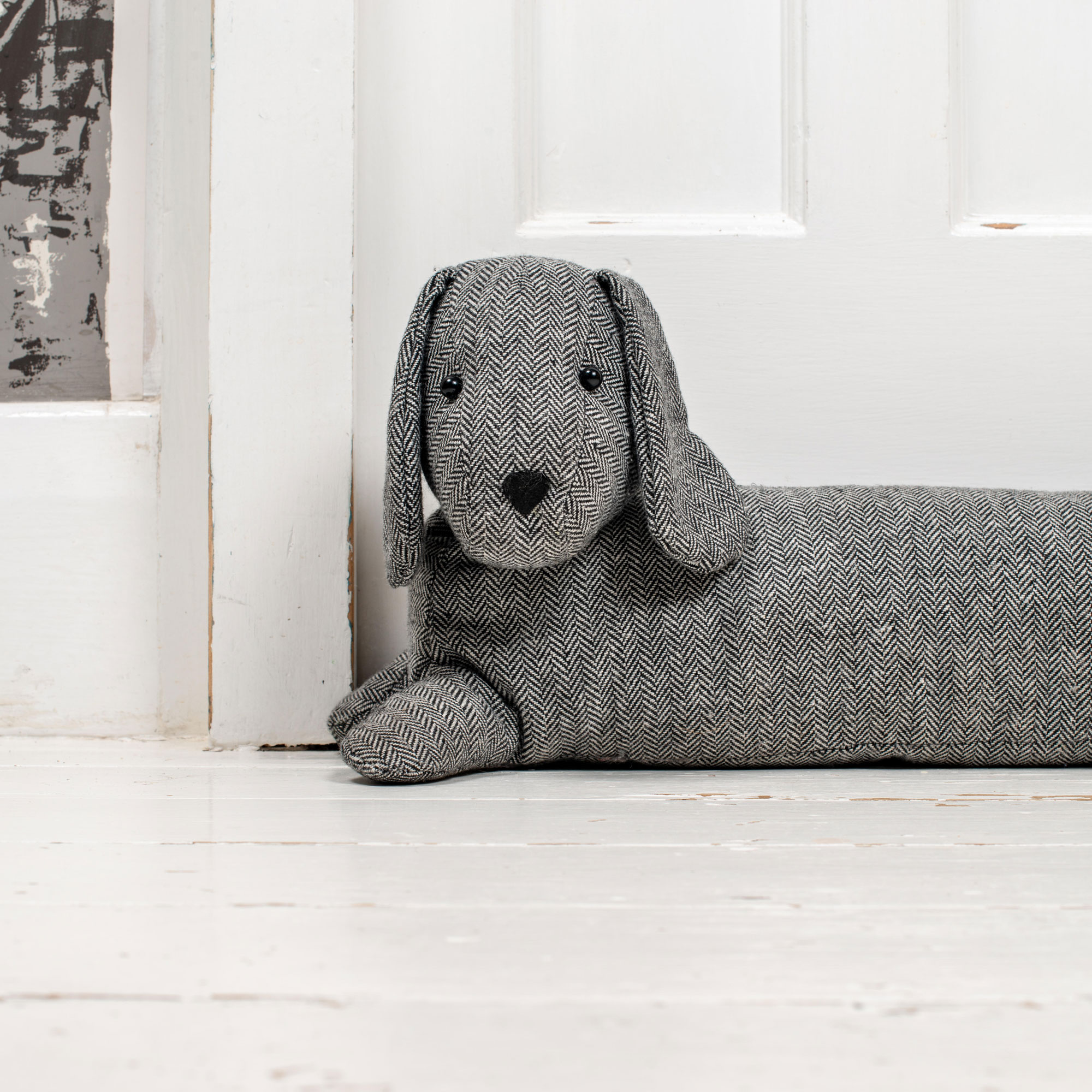
With a bit of creativity, you’ve probably got the materials in your house already to make a draught excluder. You could fashion your own soft cushioned design to put in front of the door – the Energy Saving Trust recommends stuffing a case with used plastic bags, spare bits of fabric or similar material, which will work well as a thermal barrier.
It's an easy DIY idea and there are lots of videos online and articles from craft hobby specialists offering tips on how to make your own draught excluder. It’s a great option if you love to get creative – plus it could save you money on heating and, if you’re reusing materials, will be cheaper than buying a draught excluder from a shop.
7. Cover the keyhole to stop draughts from doors
A bit like your letterbox, the keyhole is a small but disproportionately leaky gap in your door that could be letting in unwanted cold air. There are several options for this. A simple round of metal attached with a screw can be added to the outside of the door and pushed to the side when you’re using the key. These are called covered escutcheons and are a common feature of front doors; you possibly already have one.
You can also get keyhole lock cover guards, which are designed for modern cylinder locks. These flaps fit snugly over the face of the cylinder (where the key goes in) and can simply be lifted up to operate the lock.
Alternatively, you can get brush draft excluders for keyholes, which are a bit like those on letterboxes, where the key can be pushed through the brushes to operate the lock.
If you’ve got a door that has an old lock that’s no longer in use, you can fill the obsolete keyhole.
8. Upgrade door glass
Glass is the main culprit when it comes to bad thermal efficiency in homes. Lots of doors have glazed panels. If the glass is broken, then it’s important to replace front door glass. Not only is this playing with your home’s energy efficiency, but it’s also a safety risk. Single glazing can be upgraded to more thermally efficient glass – and you don’t have to replace the whole door to do this.
If you’ve got old glazed French, sliding or bifold doors that are leaking heat out of your home when it’s cold and leading to rooms overheating in summer, it’s a good idea to think about replacing them with more energy-efficient types of glazing. When assessing your options, look at the U-value. This is the method used to measure heat loss through a solid material. Lower numbers indicate better thermal efficiency. From June 2022, the Building Regulations will require most replacement doors to achieve a maximum U-value of 1.4 W/m2K.
9. Keep internal doors closed to stop draughts from doors
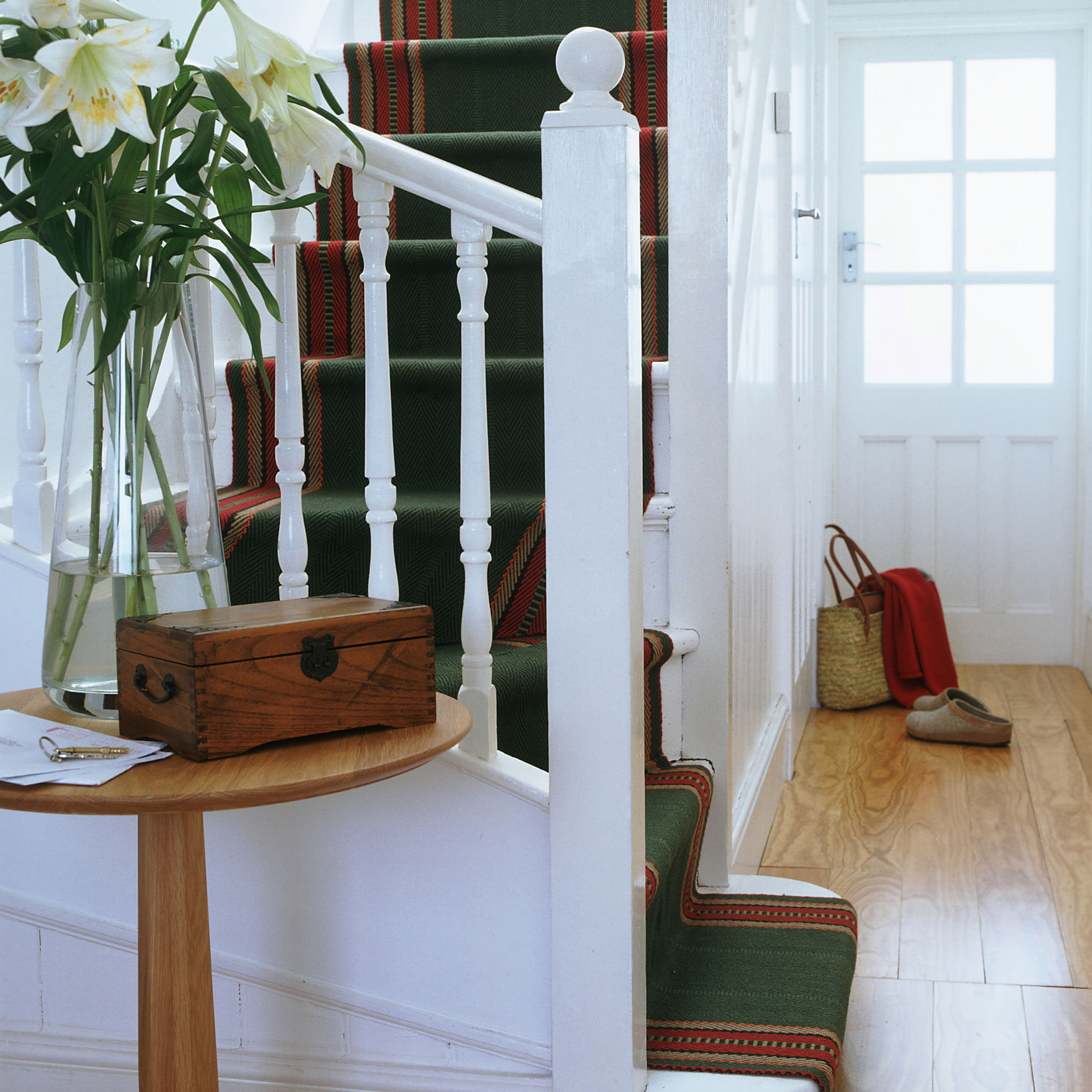
It might sound obvious, but shutting the internal doors between your external door and living spaces will do wonders in helping to keep spaces warm. There’s a reason why front doors were traditionally in closed-off hallways and back doors in utility spaces. Smaller rooms were the norm in older homes as it was easier to keep spaces warm. This doesn’t stop the root cause, however, and heating in your hallway is likely to be lost through the door – thus impacting your heating bills.
This is particularly important when it comes to open-plan living. If you’re opening rooms up, design in barriers to stop heat from easily escaping. And consider if the walls, windows and doors of your home are energy efficient enough to cope? Remember that larger spaces need more energy to heat, so the thermal efficiency of your doors and windows is even more important.
10. Buy a new door with efficient weather seals
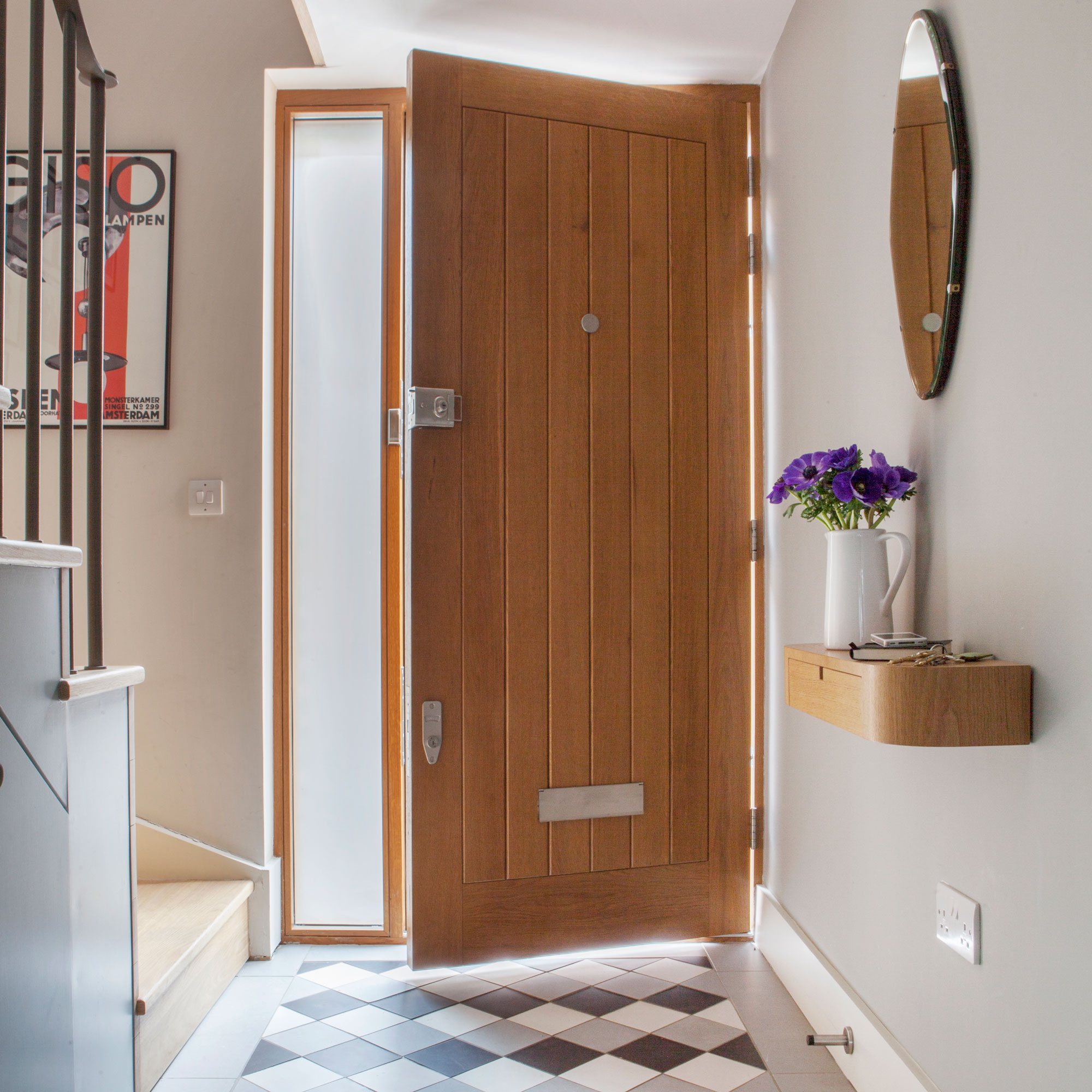
If you’ve exhausted all the above options and nothing seems to be fixing the draughts, it’s probably time to invest in a replacement door. Look for products that offer great thermal efficiency and come with weather seals.
‘Buying a well-made door with good weather sealing is essential,’ says Elizabeth Assaf. ‘We do double and triple weather seals on our doors in silicon. My experience is that brushes eventually flatten to let draughts in, so a good weather seal fitted into the frame or on the door itself is the best way forward. Also fitting a mobility threshold that has a seal on the cill of the door is a good idea – this wouldn’t cost more than £100 to do.’
When it comes to thermal efficiency on a new door, the installation is just as important as the product itself to stop draughts from doors. Guarantee the door performs as it should by getting it properly installed. ‘The best thing to optimise your draught and weatherproofing is to ensure your door is fitted correctly by using recognised installers. High-quality and expertly fitted doors won’t suffer from gaps which cause draughts,’ says Victoria Brocklesby from Origin.

Rhoda Parry was the Editorial Director of Ideal Home and its sister titles, 25 Beautiful Homes and Style at Home from 2021-2022. She wass also Editorial Director for Gardeningetc, Amateur Gardening and Easy Gardens. Rhoda is a highly experienced editor and journalist and has worked on many women's lifestyle media brands throughout her career. For the last 20 years, she has specialised in homes, interiors and gardens.